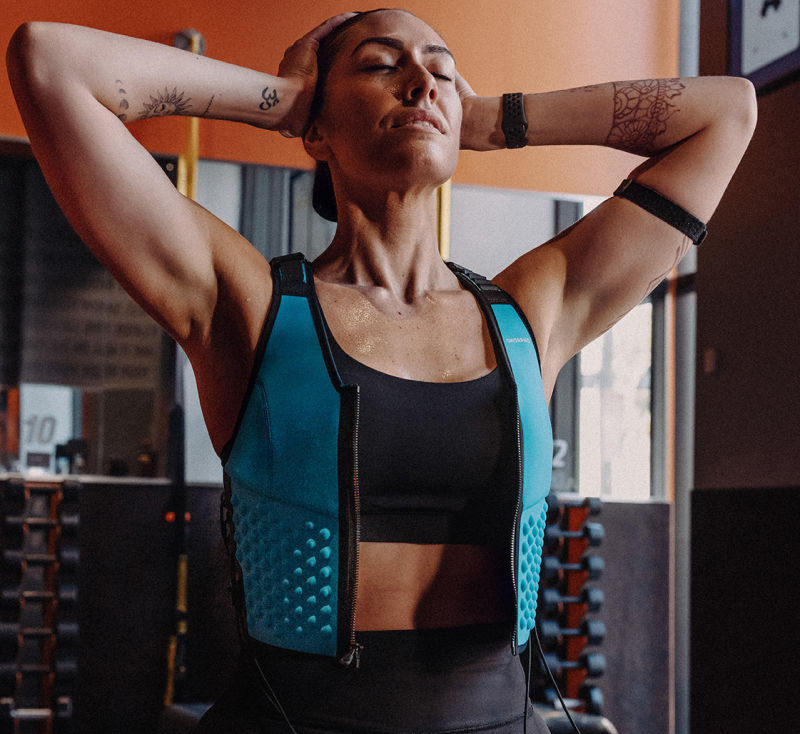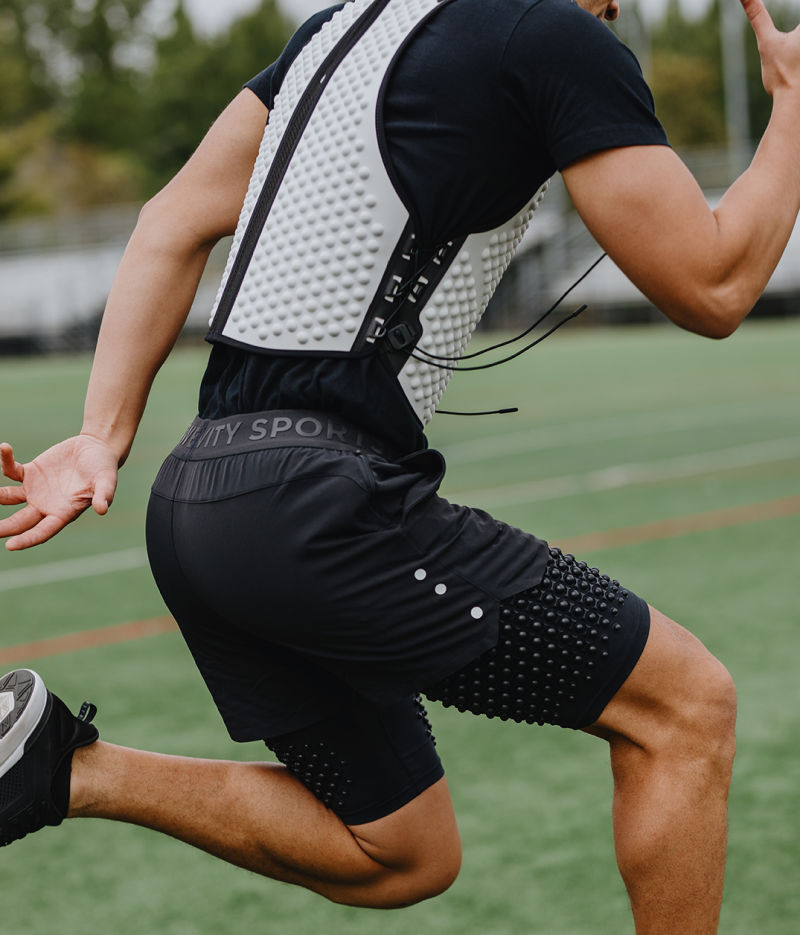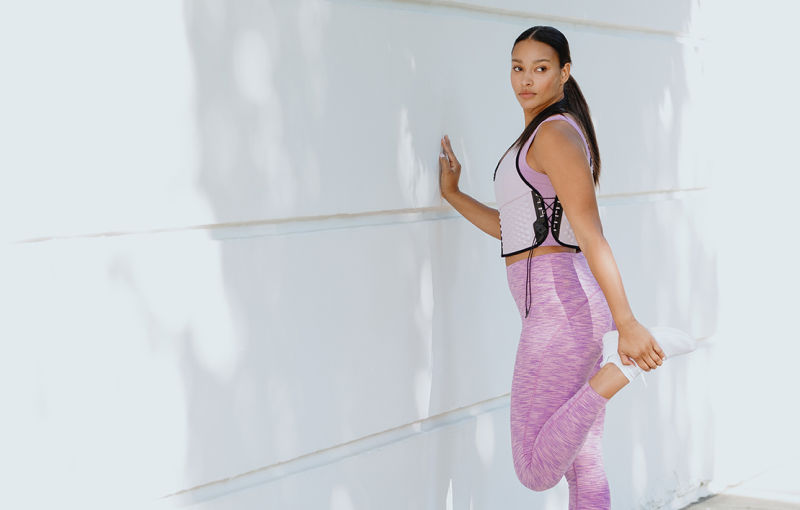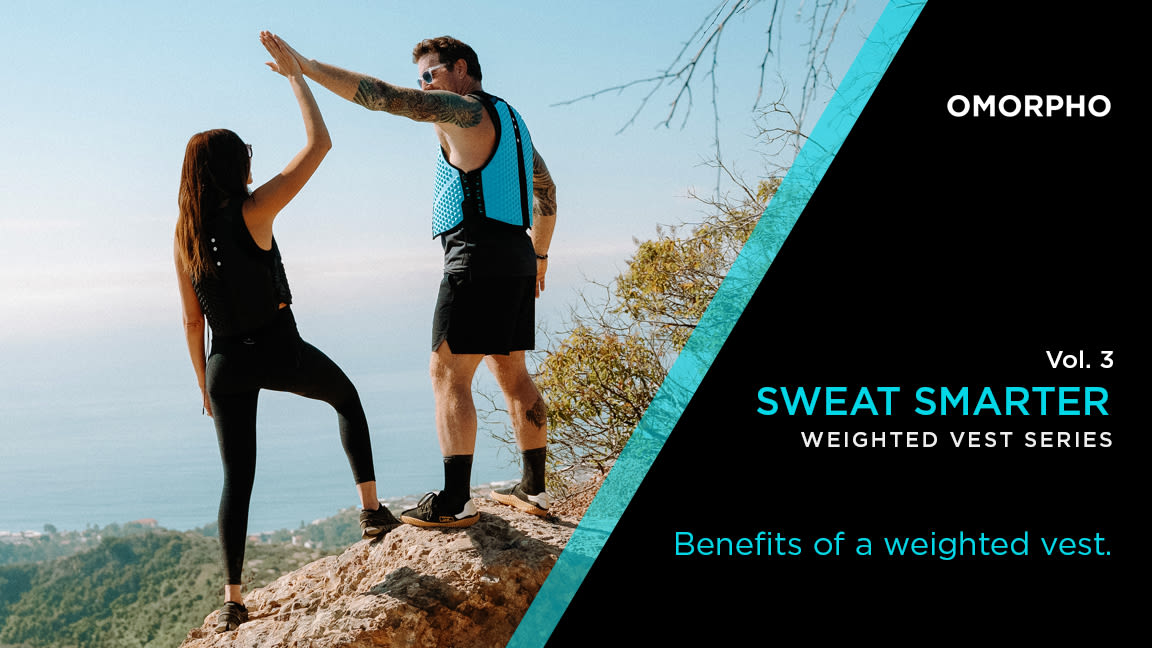It seems we are always on the search for training equipment or tools that can magically improve our performance or cut down the time needed to achieve our fitness goals. A weighted vest is quite a multi-faceted training tool, which makes it invaluable for achieving a range of performance and fitness goals, as well as accommodating personal preferences. A great place to start any fitness journey is to identify the physical capacity or outcome you want to achieve. That way you can focus your time on the training methods that work best to improve that specific outcome. While everyone has different performance and fitness goals, as well as personal preferences, weighted vests like the OMORPHO G-Vest offer a range of benefits. In this post, I’ll focus on some common training outcomes you can achieve by training with a weighted vest.
Burn More Calories
This outcome is often a main focal point for general fitness and weight management. To achieve this outcome, simply add the weighted vest to what you are already doing to burn more calories without having to add additional time to your exercise routine.
The extra weight of the vest will increase the challenge of each exercise. Essentially, the weighted vest increases the mechanical work you must do, since you weigh more (albeit slightly), during every lunge, push-up and squat jump. This will, in turn, increase the intensity of the exercise, resulting in greater use of calories during the exercise session. This is a super simple way to get more out of the time you have to work out.

Effort levels are certainly tied to this outcome. You must actually step up your effort to match the increased challenge of carrying added weight, to gain the extra benefit of burned calories. If you slow down, don’t go as low with each squat or do fewer push-ups, you won’t see that calorie burn boost.
This is why the lighter, distributed weight of the G-Vest is an advantage. In general, a weighted vest should not overload you to the extent that you can’t move similarly to how you move without the vest. That also applies to movement speed, range of motion and general coordination. When in doubt: if your weights are preventing you from moving naturally, then the added weight is likely too much to be helping you (or the specific movement you are trying to do).
Challenge Core Strength, Balance and Stability
When wearing a weighted vest, you are carrying extra weight across the torso. This creates a targeted challenge to the core muscles during movement, by requiring them to stabilize the body when in motion.
Let’s use walking lunges as an example. Obviously, the legs are doing the work to raise and lower the body. But walking lunges are also a great showcase of the lower body and core’s dynamic stability. You must maintain a balanced, upright position as you transition from standing on one foot, to standing on both, to stepping onto the other foot. This requires coordination, timing and strength of the muscles across the hips, pelvis and torso. When you add a weighted vest, you exaggerate the core stability challenge. Over time your body will adapt to the specific challenge by improving the coordination, timing and strength of the muscles needed to perform the task.
Increase Cardiovascular Fitness
As previously mentioned, the added weight of the vest will increase the challenge of the exercise you are doing. With this increased challenge (also termed “overload”), the cardiovascular system must respond to meet the demands placed on the body. Over time, the body will adapt to acquire a greater cardiovascular efficiency for the exercise you are doing. It feels obvious when you take off the G-Vest, as you’re able to perform the same exercise at a greater fitness level.

In general, when you add a weighted vest, such as the G-Vest, to an exercise regime that you are already accustomed to, this can be viewed as an incremental overload: a step up in the challenge of that exercise regime. Incrementally or progressively overloading the body is a tried-and-true method to drive performance adaptations. It’s seen as safe because you are not going so hard during an exercise session that 1) You are putting yourself at a high risk of injury, and 2) You are becoming so fatigued that you are making it difficult for your body to recover before the next exercise session.
For example, group exercise devotees may find that over the course of regularly attending classes for months or even years, the challenge diminishes. This is because the body has adapted to the specific coordination and intensity challenges. To continue experiencing fitness improvements, you must increase the training stimulus by increasing the challenge. Ideally, you should increase the challenge incrementally to stay in a safe exercise and recovery zone.
Improve Performance
Similar to the outcome of improved cardiovascular changes when training with a weighted vest, the musculoskeletal and nervous systems also adapt to the increased challenge. Adaptations to the musculoskeletal and nervous systems can have a direct impact on movement performance. Here, you can think about performance measures like speed, agility, coordination, power and proficiency in advanced movement skills.

For example, wearing a weighted vest while doing burpees will certainly make burpees harder, but over time, your ability to quickly get down and up off the ground, and jump into the air, will improve. This occurs because your core strength and dynamic stability improve to support moving quickly, your arm strength improves to perform the push-up segment and your leg strength improves to powerfully get up off the ground and jump into the air. And then, when you take off the weighted vest, you will be able to move faster through each stage of the burpee.
Everyday Use
Another interesting application for the weighted vest is to wear it outside of your training sessions. It’s quite simple; you wear your weighted vest during activities in your daily life, like walking through the grocery store or doing house chores. Typically, this is done for a large portion of the day (e.g. eight hours). Research has shown this approach to be effective for a variety of different performance attributes, like stair climbing speed for tactical athletes (Lowe et al. 2016) and repeat jump performance for CrossFit athletes (Scadumore et al. 2016). This has also been shown to be a successful route for weight loss in individuals classified as mildly obese (Ohlsson et al. 2020).
A way to amplify this extended-wear approach is to wear a weighted vest inside and outside of training. Researchers have been looking into this type of weighted vest use as far back as the mid-1980s (Bosco, 1985). This has shown promise by positively impacting power production in track and field athletes by upwards of 11% (Bosco et al. 1986; Sands et al. 1996). However, one should be cognizant of the possibility of overuse injuries (Sands et al. 1996) and be wise to slowly progress to the desired added-weight exposure duration.

In the realm of fitness, weighted vests stand out as powerful tools for those seeking to maximize the benefits when training. From increased intensity to cardiovascular gains to enhanced strength and endurance, the advantages of incorporating a weighted vest into your routine are clear. The OMORPHO G-Vest offers a thoughtful design and MicroLoad™ weight distribution makes it a standout choice for individuals committed to reaching new heights in their fitness journey. Whether you're a seasoned athlete or a fitness novice, consider adding a weighted vest to your arsenal and experience the transformative impact it can have on your training.
References:
Bosco (1985) Adaptive response of human skeletal muscle to simulated hyper gravity condition. Acta Physiologica Scadinavica, 124, 507-513.
Bosco et al. (1986) The effect of extra-load conditioning on muscle performance in athletes. Medicine and Science in Sports and Exercise, 18(4), 415-419.
Lowe et al. (2016) External loading during daily living improves high intensity tasks under load. International Journal of Industrial Ergonomics, 55, 34-39.
Ohlsson et al. (2020) Increased weight loading reduces body weight and body fat in obese subjects - A proof of concept randomized clinical trial. E Clinical Medicine, 22, 100338.
Sands et al. (1996) Hyper gravity training: Women’s track and field. Journal of Strength and Conditioning Research, 10(1), 30-34.
Scadumore et al. (2016) Three week hyper gravity training intervention decreases ground contact time during repeated jumping and improves sprinting and shuttle running performance. International Journal of Exercise Science, 9(2), 149-158.

